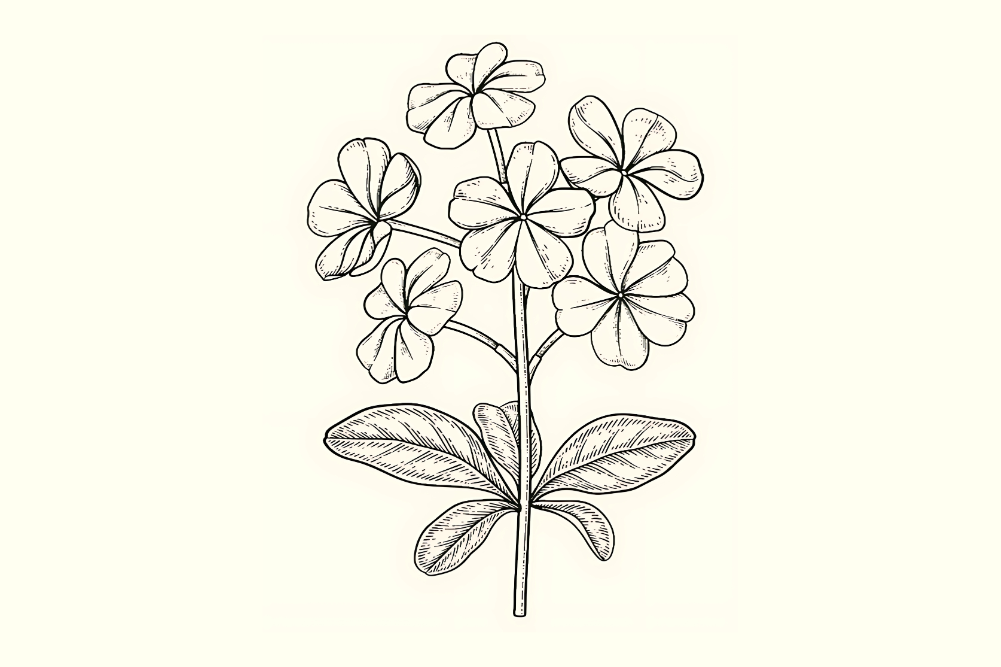Gardening by the Moon
Discover the beauty of Ethno-Astro-Botanicals for healthy wellbeing and abundant greenlife
Ethnobotany is the study of how humans have always depended on plants for food, shelter, clothing and more. If we add in the elemental pattern language of astrology, then we have Ethno-Astro-Botany, a triumvirate/intersection of utilitarian magic, guidance and inspiration for how to successfully live a human life here on Earth. Two specific forms are Astro-Botanicals and Lunar Gardening.
Astro-Botanicals
As planets and plants can each be expressed in an elemental language, they can be easily and effectively combined. The way to understand how to use plants both medicinally and magically is to understand their elemental expression and how it connects to planetary knowledge.
Plants can be broken down into the four elements, each having their own unique composition of earth, air, fire and water. This is the base upon which herbal medicine is built, and can also be linked to the qualities of the planets in astrology, creating an arc of knowledge and application that can be used as an alchemical bridge to utilise the effects of the planets and plants to benefit the human mind and body.
Saturn
Saturn is the farthest visible planet. It is slow-moving, very cold and dry, melancholic and heavy. In excess, the properties of Saturn will cause life to decline. It is the planet of alignment with natural law, hard work, discipline, and eventual mastery. Saturn is the greater malefic, and we do well to take our Saturn work seriously as it’s what makes our lives work, or not.
Saturn rules yin Capricorn and yang Aquarius, as well as our bones and teeth.
Qualities of Saturn plants include poisonous plants, edge-dwellers, plants that affect our bones, illegal plants, plants that grow in the shade or in poor soil.
Saturn plants | Belladonna, comfrey, foxglove, mandrake.
Belladonna, mandrake and foxglove are all medicinal plants, if used internally in the correct dosage. If incorrectly applied, they are very toxic. A safer way to use them in your garden is as protection. Comfrey is also called knit-bone. It is a remarkable healer that can reduce bruising and help skin wounds knit back together more quickly. Use them on Satur(n)day for best results.
Jupiter
Jupiter is the great benefic whose properties are warm and moist, making it very good at fostering life and growth. Jupiter is the planet of expansion, good fortune and cosmic blessings. When we work our Jupiter, doors open wide and abundance and opportunities flow in.
Jupiter rules yang Sagittarius and yin Pisces, plus kidneys, ears, memory and the brain.
Qualities of Jupiter plants are large and nutritious. They affect the liver and digestive system.
Jupiter plants | Borage, sage, fig.
Borage is a very generous plant in terms of nectar for pollinators, essential fatty acids for people, and a good kidney flush when used as a tea. Sage is a digestive that stimulates the production of bile, which helps break down Jupiter-rich foods, while figs nourish the digestive system. If you work with these plants on a Thursday, you will get maximum benefits.
Mars
Mars is the red planet, intemperately hot and dry, easily overdoing it and being problematic for life. Mars is the planet of offense, defence, war, passion and competition. It teaches us to have a functioning immune system and how to protect ourselves.
Mars rules yang Aries and yin Scorpio, as well as the red blood cells, the sex organs, the blood, and vital life energy.
Characteristics of Mars-ruled plants include plants that may irritate the skin, strong spicy aromas, warming plants, those that strengthen the immune system, and plants of protection.
Mars plants | Garlic, pepper, thistle.
Garlic is good for the immune system, protects you from vampires and lowers blood pressure. Cayenne peppers can reduce high blood pressure and provides extra protection for the stomach against infections. Milk thistle protects the liver and strengthens the immune system. Take these herbs on a Tuesday to tap into the Mars day power.
Venus
Venus balances out Mars with her feminine emphasis on connection and beauty. As the lesser benefic, she too fosters life and growth. Venus rules love and money. She shows how we attract to ourselves what we need and our capacity for pleasure. I like to think of Venus and Jupiter as greenhouses bursting with fertile life.
Venus rules yin Taurus and yang Libra, plus the face, body, the genitals, sexual fluids, and ojas (Sanskrit for “essence of vitality”). Characteristics of Venus ruled plants are beautiful, fragrant, winsome flowers, soft furry leaves and aphrodisiacs.
Venus plants | Roses, violet, vanilla.
You can make an aphrodisiac cordial or a bath tea using these plants to increase Venus in your life. Make the medicine or take the bath on a Friday
for maximum benefits.
Mercury
Mercury is a neutral planet, displaying both masculine and feminine qualities. He has the unique ability of any planet to be able to move between the upper world and the underworld. Mercury, or Hermes, is the original god of magic. His emerald tablets are the source of the creed, “As above, so below”, offering the mechanism by which astrology and magic function.
Mercury is the planetary god of communication, commerce and travel. It rules yang Gemini and yin Virgo, the lungs, the nervous system, arms and hands.
Qualities of Mercury plants affect the nervous and respiratory systems, and plants that have umbels.
Mercury plants | Mint, clary sage, elecampane.
You can make tea or tincture using mint and elecampane for respiratory support, while clary sage helps with nerve pain. Use on a Wednesday.
The Moon
The Moon rules all the waters, being the governor of tides of all sorts, including menstrual cycles and emotions. The Moon illuminates our innermost emotional self, it is how we experienced life through our mother and how we nourish ourselves.
The Moon rules Cancer, along with the breasts, belly and the left eye.
Lunar plant qualities include calming, relaxing and cooling plants, plants that open at night, have a high-water content and aid sleep.
Moon plants | Chamomile, evening primrose, mugwort.
Chamomile is legendarily good for tummy aches and restless nights. Evening primrose makes an excellent essential fatty acid that nourishes female reproductive systems. Mugwort is peerless for stimulating dream activity. Chamomile and mugwort are used as teas, while the evening primrose is most effective as a concentrated supplement. Each is especially effective on Mondays.
The Sun
The Sun is the radiant centre of all life. It is hot and dry in the perfect ratio. The Sun is our vitality and identity.
It mandates our creativity in many ways and rules the right eye, heart, spine and the sign of Leo.
Solar plants affect the heart and circulation, are known as anti-depressants and can have flowers that resemble the Sun.
Sun plants | St John’s Wort, sunflower, angelica.
St John’s Wort can be used as a tea or tincture for mood elevation. Sunflower
Moon phases
The Moon will ascend for about 14 days and descend for about 14 days. Increasing or decreasing light controls the amount of moisture in the soil. We know that the Moon controls the ocean’s tides. Equally, it controls the tides in tiny bodies of water, such as those in soil.
The Earth’s gravitational field is pulled by both the Sun and the Moon, with the highest tides found at the New and Full Moons when the luminaries are lined up with the Earth.
Seeds absorb maximum water at the Full Moon, so you want to start seeds just before this time, to catch the rising moisture tide. General guidance says avoid planting on New or Full Moon days as the influences are confused in the turning tides.
New Moon | The lunar gravity pulls up water, causing the seeds to swell and burst. Combined with the increasing moonlight, this creates balanced root and leaf growth.
The first quarter is the best time for planting above ground bearing annual crops that produce their seeds outside the fruit (ie. lettuce, spinach, celery, broccoli, cabbage, cauliflower and grain crops).
First quarter | Best for plants that make their seeds outside of the fruiting body (ie. lettuces). Plant your above-ground annuals in the first quarter as there is less gravitational pull but the moonlight is strong, promoting healthy leaf growth. It is generally a good time for planting annuals that produce above ground but their seeds form inside the fruit, such as beans, melons, peas, peppers, squash and tomatoes.
Full Moon | The highest amount of moisture is in the soil at this time, and tests have proven that seeds will absorb the most water at the time of the Full Moon. Plant in the few days just before the Full Moon to get the benefits of peak moisture.
Last quarter | After the Full Moon when the light is waning or decreasing and the energy is drawing down. The gravitation pull is high, creating more moisture in the soil but the moonlight is decreasing, putting energy into the roots. This is a favourable time for planting root crops such as beets and carrots. It is also good for perennials, bulbs and transplanting because of the active root growth.
Moon signs
The Moon changes signs every two and a half days and different signs are associated with the elements: Earth/root, Air/flowers, Fire/fruits and seeds, Water/leaves.
The water/leaf signs of Cancer, Pisces, and Scorpio are the best planting days for planting any and all plants. Water signs are fertile times for planting above-ground leafy annuals such as lettuce, spinach, chard and brassicas, especially in the first or second quarter.
The earth/root signs, Taurus, Virgo and Capricorn, are also very fertile and thus good for planting. Earth signs are good for root crops and for transplanting. Utilise the third quarter for this purpose.
Air/flower signs Gemini, Libra and Aquarius are generally barren and dry. Venus-ruled Libra is the exception and is semi-fertile, good for flowers and herbs, vines and roots. Melons like Gemini and onions favour Aquarius. Air signs are a good time to harvest and work the soil.
The fire/fruit-seed signs of Aries, Leo and Sagittarius are barren and dry. Use these signs for fruit and seed crops, pruning and harvesting. The combination of phase and sign is where you can get the most precise application, but always prioritise the phase.
The intersection of planets, plants and humans is very old and these techniques continue to bear fruit when applied to living on Earth with the seasons and cycles we move through. No matter what else is happening, we always need to eat, we need medicines, and we need clothing and shelter. If we apply these ways of living, we enhance our ability to not just survive but to thrive.
Article Featured in WellBeing Astrology 2023







